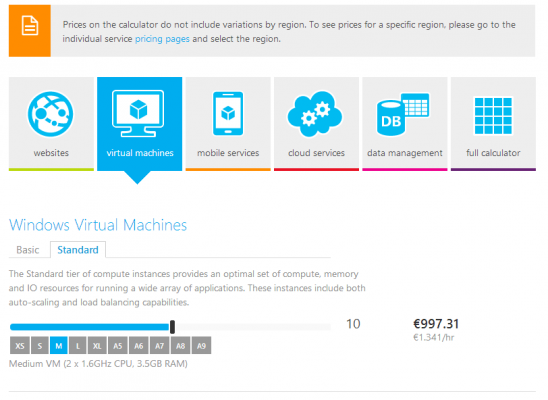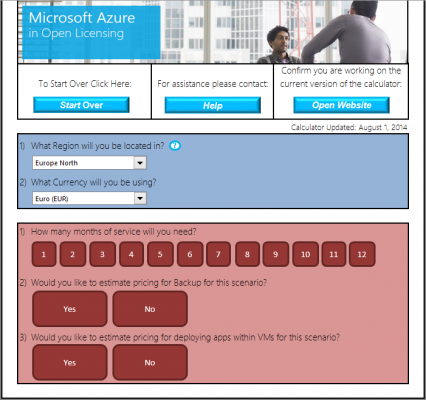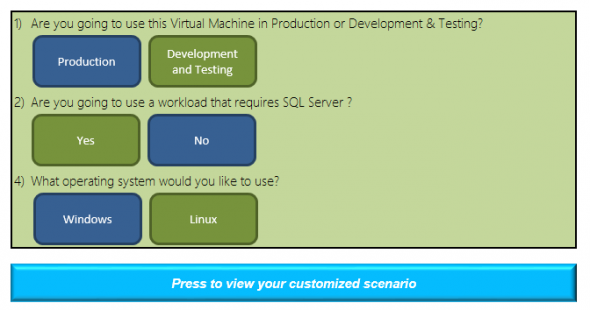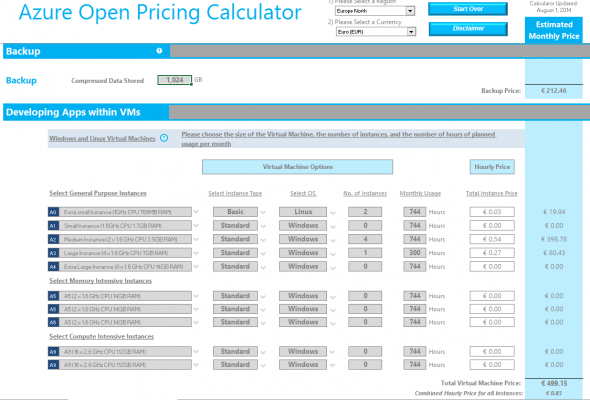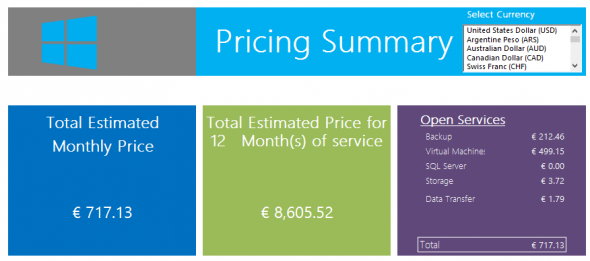How to Price Microsoft Azure on Open Licensing
In my work, evangelizing about reselling Microsoft Azure through open licensing, I have encountered numerous questions that I am frequently asked. The most difficult questions start with “How much…?” In this post, I will try to answer the most important question of all that customers, re-sellers, and techies need to answer: How much will something cost in Azure?
The Microsoft Azure Pricelist
Microsoft Azure, like the other big public clouds, is based on a pay-as-you-go model. You consume resources and services, and each of those has a granular usage cost. I compare Azure to a mobile/cell phone service. The telecoms company lists their pricing. An example of this would be text messaging:
- Sending a text to the same network costs A
- Sending a text to a different network costs B
- Sending a text while roaming costs C
- Sending a multimedia message costs D
There is a micro-cost to consume one instance of each service, but you are usually going to consume lots of instances. The benefit of this model is that you define your own pricing plan:
- There is a low cost of entry to a service
- You spend as much as you need or as little as you want
- You are not locked into any commitment
These benefits are magnified with a pre-paid or burner mobile phone plan… and this is the analogy that I use to explain Azure on open licensing.
The pricing bible for Azure can be found in the Azure portal. For example, you can browse the various types of virtual machines and see the pricing of each instance size in the basic and standard tiers. You can also see how that pricing varies depending on your region and currency choices.
An online calculator also allows you to estimate your monthly costs. Each tab on this site (Websites, Virtual Machines, Mobile Services, and so on) is a separate calculator. I can price virtual machines by selecting a tier (basic or standard), picking virtual machine specifications, and selecting a quantity. Don’t forget to add a cost for egress bandwidth costs, and remember that support is and additional cost. Missing from this tab is the cost of additional storage for data, which you can add later on the Data Management tab.
The online calculator does not give you region specific pricing. You will have to return to the official Azure pricing pages to get those.
Azure Open Calculator
Microsoft released an Azure Open Calculator in conjunction with the release of Azure credits through the distribution channel on August 1, 2014. This is a pre-sales tool that is aimed at resellers who will supply Azure credits and consulting services to their customers. The tool is Excel-based, so it should be familiar to sales and pre-sales people who will be using it.
When you open the Open Calculator, you will need to enable the content to execute when prompted by Excel. Then you are greeted by the introduction screen. If you’re new to Azure, then this is a good place to start. If you’re used to how Azure is priced, you’ll jump straight to the Global Pricing Calculator worksheet (more later). You can select:
- How many month’s credit you need
- The region and currency
- Whether you want to price backup or not
- Whether you want to price virtual machines or not
If you choose to include virtual machines in your pricing, then the screen will expand to enable you to customize your virtual machine pricing:
- Production or dev/testing?
- Do you want to price virtual machines that include the cost of SQL Server?
- Windows or Linux?
When ready, you can click Press To View Your Customized Scenario. Now you get a much more detailed view where you can select:
- Region/currency
- The amount of required compressed backup space
- Virtual machines, including specification, tier, operating system type, quantity and execution hours per month
If you scroll down you can price additional storage, including replication methods, and the cost of egress bandwidth for Zone 1, which includes USA and European regions.
The Preferred Scenarios Summary worksheet summarizes the pricing for your scenario, on a monthly and yearly basis, with a breakdown of the costs.
Maybe you noticed that the specific scenario pricing didn’t include some pricing or options? That’s true because it is very basic, but it’s a good place to learn how the Azure Calculator works. There are two more worksheets in the spreadsheet. Global Pricing Calculator gives you many more options for pricing your solution, allowing you to include many kinds of virtual machines, the cost of a VPN gateway, and much more that is hidden in the specific scenario toolset. The Global Pricing Summary then sums up that solution. Personally speaking, I think you should skip the introduction and jump straight into these screens if you know what you are doing.
The total price given to you is an estimate. However, several variables are at play:
- The number of hours per month varies each month
- How much egress bandwidth will you need?
- Do you know how much space will be required by a compressed backup?
Use the pricing as a guideline rather than as a scientific locked-down forecast.
The Azure Pricing Calculator appears to download pricing from Microsoft when you open the document. That should make the item costs quite accurate. But they are not.
I have noticed that the spreadsheet rounds the costs. A customer of mine complained when they noticed that the online calculator was more expensive than the Open Calculator. I investigated their scenario, which was based on small instance (A1) virtual machines running in Europe North. The costs in the two calculators were as follows:
- Online calculator: €0.061 * 744 hours = approximately €45.38/month
- Open calculator: €0.06 * 744 hours = approximately €44.64 /month
That’s a 1.6% price difference. It doesn’t sound like much, but over 12 months for dozens of virtual machines, that’s a lot, and for the reseller, it could be embarrassing and costly.
Until this rounding error is fixed, I will be recommending that customers stick with the website and spend time transcribing figures to Excel for pricing. However, the Open Calculator is updated frequently, and hopefully Microsoft will fix this issue.




